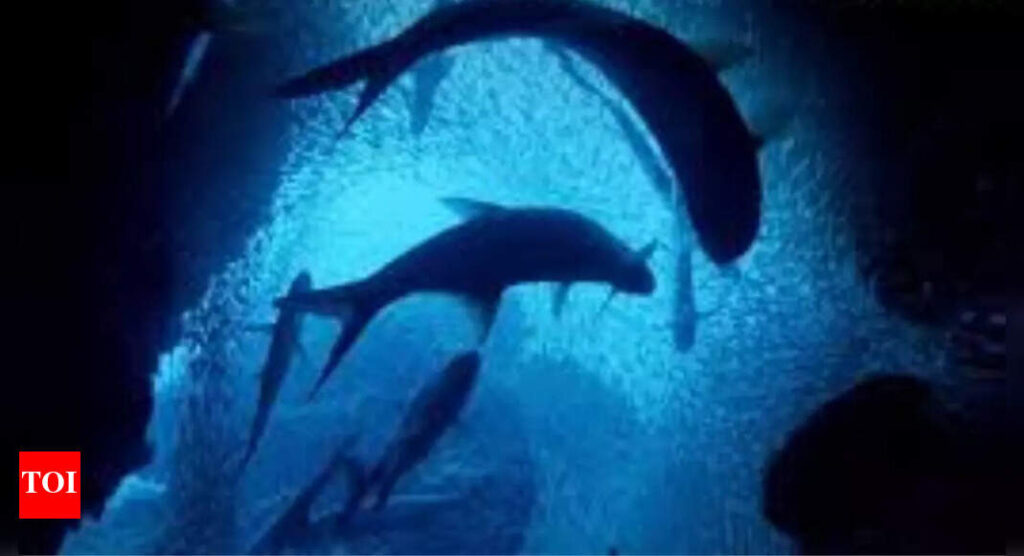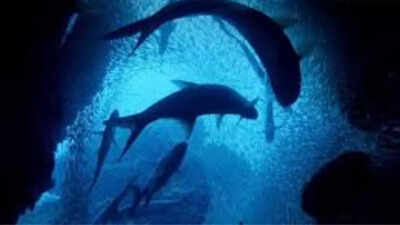The deep ocean which covers over 70% of the Earth’s surface, remains one of the most mysterious and unexplored areas of our planet. Despite its vastness and importance, only a mere 0.001% has been explored by humans, leaving a significant portion of this underwater world untouched and mysterious. These depths are home to unique ecosystems, countless species, and critical functions that help regulate Earth’s climate. However, despite its limited exploration, the deep ocean is already facing the threat of irreversible damage due to human activities like climate change, pollution, deep-sea mining, and overfishing. As we continue to exploit its resources without fully understanding its complexities, the deep ocean is at risk of being harmed before we even grasp its true potential and value.
Importance of deep oceans
The deep oceans play a crucial role in regulating Earth’s climate by absorbing carbon dioxide and heat, helping to relieve climate change. They are home to diverse, yet largely unexplored ecosystems that could hold valuable scientific and medical discoveries. These ecosystems support the broader marine food web, ensuring biodiversity and the sustainability of fisheries. The deep ocean also contains untapped resources like minerals and rare elements, with potential for future exploration. Additionally, deep oceans have cultural and economic importance, particularly for coastal communities. Thus, understanding and protecting this vital environment is essential for the planet’s health and future.
The reality of 0.001% deep ocean
Although the deep ocean covers the majority of the Earth, it remains largely unexplored, with only a tiny area, about the size of Rhode Island, ever being visually studied by humans.The reality of having explored just 0.001% of the deep ocean is both astonishing and concerning. Despite the ocean covering over 60% of the Earth’s surface, we have only explored 0.001% of it. This tiny fraction represents the small amount of the deep ocean that has been visually explored, with most of its vast depths remaining a mystery. The deep ocean is an incredibly complex and diverse environment, home to countless species, ecosystems, and resources that could hold the key to advancements in science, medicine, and climate solutions. Yet, due to limited exploration and technology, we are unaware of the full extent of its importance and the potential risks it faces. This lack of exploration is compounded by threats like pollution, climate change, and deep-sea mining, which could cause irreversible damage to the ocean’s delicate balance long before we fully understand it.
Unknown depth of deep oceans
The unknown depths of the deep ocean hold countless mysteries that remain largely unexplored. These vast underwater realms descend to incredible depths, some reaching over 36,000 feet in places like the Mariana Trench — deeper than Mount Everest is tall. Within these dark and extreme environments, temperatures near freezing, immense pressure, and near-total darkness make exploration incredibly challenging. Despite this, scientists believe that the deep ocean is teeming with life and holds ecosystems unlike anything seen on the surface.
Challenges of deep ocean exploration
- Immense pressure: At depths over 1,000 times that of sea level, the intense pressure makes it difficult for equipment to function properly.
- Extreme Cold: Deep-ocean temperatures near freezing present challenges for both equipment and organisms.
- Lack of Light: Beyond 200 meters, natural light disappears, limiting visual exploration and relying on expensive artificial lighting.
- Technological Limitations: Specialized submersibles and remotely operated vehicles (ROVs) are needed, making deep-sea expeditions complex and costly.
- Vastness and Inaccessibility: The sheer size and inaccessibility of the deep ocean make comprehensive exploration extremely diffi
- Environmental Impact: Exploration activities can disturb fragile ecosystems, requiring sustainable methods to prevent long-term damage.
Threats to deep oceans
- Climate Change: Warming waters and ocean acidification caused by climate change disrupt deep-sea ecosystems.
- Deep-Sea Mining: The extraction of minerals damages fragile habitats and releases toxic substances into the environment.
- Pollution: Plastics and chemicals are reaching the ocean’s depths, contaminating marine life and ecosystems.
- Overfishing: Overfishing and destructive practices like trawling deplete species and damage deep-sea environments.
- Noise Pollution: Noise from shipping and sonar interferes with marine life’s ability to communicate and navigate.
- Resource Overexploitation: The overuse of biological and mineral resources puts additional stress on vulnerable deep-ocean ecosystems
- Biodiversity Loss: These combined threats jeopardize deep-ocean biodiversity and its vital role in regulating Earth’s climate.
Opportunities and solutions for deep ocean
- Strengthen International Regulations: Strengthen global policies to prevent overexploitation and reduce pollution in the deep ocean.
- Marine Protected Areas (MPAs): Establish MPAs to protect vulnerable ecosystems from harmful activities like mining and destructive fishing.
- Technological Advancements: Utilize deep-sea drones, sensors, and other technologies to improve exploration and monitoring of deep-ocean environments.
- Sustainable Practices: Promote sustainable methods in deep-sea mining and fishing to minimize environmental damage.
- Public Awareness: Raise awareness about the importance of the deep ocean to encourage global conservation efforts.
- Increased Funding and Collaboration: Invest in research and foster global collaboration to enhance protection and preservation of these fragile ecosystems.
Also read: NASA alert! A massive asteroid racing towards Earth at 14 kilometres per second on May 24; should we be concerned


